Hopefuls from 55 countries entered the 2018 Redress Design Award and on September 6 that year the 11 finalists presented their collections before a capacity audience at the gala finale in Hong Kong.All were impressive, but the winner of the world’s largest sustainable fashion design competition stood out like a beacon: Australia’s Tess Whitfort, whose exuberant punk-inspired pieces in black, white and acid yellow captivated the judges. She also raised the sustainability bar by creating patterns that resulted in zero fabric wastage.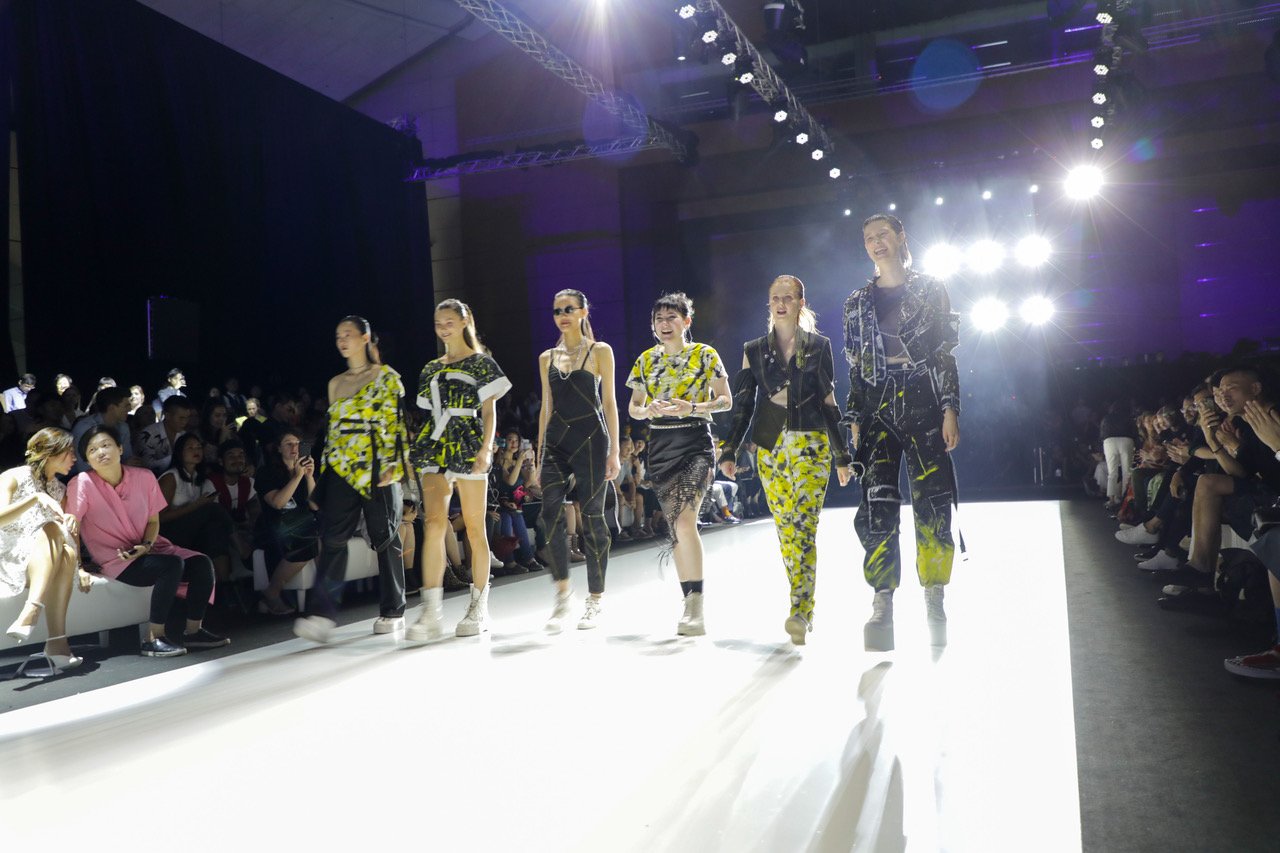 Her bold, edgy streetwear will be exhibited at Fashion Exposed Now in exciting new attraction, The Sustainable Edit. It’s the perfect showcase for the 25-year-old Melburnian who scored a double triumph in 2017: Degree Student of the Year at the Box Hill Institute and Melbourne Fashion Week Student Designer of the Year.Last September, Tess celebrated her new label Pendulum Studios with a launch party. There are some great shots of it on Pendulum’s website, but make no mistake: this is a super-serious young designer passionate about reducing the fashion industry’s punishing impact on the environment - and changing perceptions about sustainable fashion while she’s at it.“It’s usually about wholesome options like linen sack dresses in natural colours and that has limited appeal,” says Tess. “My grudge clothes embody the idea that being a total badass and a good person aren’t mutually exclusive.”Her lecturers at the Box Hill Institute where she took her BA in fashion design were influential. Even more so have been her parents.“My dad is an engineer and my mum is a nurse and artist – both strong, creative individualists who have been tremendously supportive.”The complex skills that go into those Pendulum dresses and separates emerged early. “As a three-year-old I was already doing 100-piece jigsaw puzzles,” says Tess. “Creating zero waste patterns has been a bit like tackling a jigsaw. It’s also been an important challenge. The industry norm is 15% fabric wastage.”Sustainability underpins Pendulum – measures include biodegradable elastic and compostable packaging – though Tess, who has recently perfected a ground-breaking technique for producing her zero wastage styles in five sizes, has also become savvy about fashion’s commercial demands.The big catalyst was her Redress Design Award. As a winner, she became part of elite upcycled fashion brand, the R Collective, which represents the competition’s top talents, and was invited to design a commercial collection for Hong Kong’s premier luxury department store, Lane Crawford.She spent three intensive months working on the project and her collection, titled Avoidance, hit the mark – six eminently wearable pieces including an aviation-inspired jumpsuit, a dress with adjustable belted detailing and a retro varsity style jacket.Why “Avoidance”? Two reasons, Tess Whitfort explained in a report for the R Collective’s magazine: The obvious one – that her collection was about avoiding waste – and because the word resonated with her on a personal level.“I’ve struggled with anxiety my whole life and avoidance is my biggest coping method and mind trap … (it’s) something I’ve had to overcome a lot in order to be where I am now,” she revealed.A few other things about Tess Whitfort: She’s vegan (but not judgemental about those who aren’t), works with Carbon Neutral Australia on their Plant A Tree initiative and prefers seeing her clothes on “regular people” rather than on models. She’s the real deal.Story by Zelda Cawthorne
Her bold, edgy streetwear will be exhibited at Fashion Exposed Now in exciting new attraction, The Sustainable Edit. It’s the perfect showcase for the 25-year-old Melburnian who scored a double triumph in 2017: Degree Student of the Year at the Box Hill Institute and Melbourne Fashion Week Student Designer of the Year.Last September, Tess celebrated her new label Pendulum Studios with a launch party. There are some great shots of it on Pendulum’s website, but make no mistake: this is a super-serious young designer passionate about reducing the fashion industry’s punishing impact on the environment - and changing perceptions about sustainable fashion while she’s at it.“It’s usually about wholesome options like linen sack dresses in natural colours and that has limited appeal,” says Tess. “My grudge clothes embody the idea that being a total badass and a good person aren’t mutually exclusive.”Her lecturers at the Box Hill Institute where she took her BA in fashion design were influential. Even more so have been her parents.“My dad is an engineer and my mum is a nurse and artist – both strong, creative individualists who have been tremendously supportive.”The complex skills that go into those Pendulum dresses and separates emerged early. “As a three-year-old I was already doing 100-piece jigsaw puzzles,” says Tess. “Creating zero waste patterns has been a bit like tackling a jigsaw. It’s also been an important challenge. The industry norm is 15% fabric wastage.”Sustainability underpins Pendulum – measures include biodegradable elastic and compostable packaging – though Tess, who has recently perfected a ground-breaking technique for producing her zero wastage styles in five sizes, has also become savvy about fashion’s commercial demands.The big catalyst was her Redress Design Award. As a winner, she became part of elite upcycled fashion brand, the R Collective, which represents the competition’s top talents, and was invited to design a commercial collection for Hong Kong’s premier luxury department store, Lane Crawford.She spent three intensive months working on the project and her collection, titled Avoidance, hit the mark – six eminently wearable pieces including an aviation-inspired jumpsuit, a dress with adjustable belted detailing and a retro varsity style jacket.Why “Avoidance”? Two reasons, Tess Whitfort explained in a report for the R Collective’s magazine: The obvious one – that her collection was about avoiding waste – and because the word resonated with her on a personal level.“I’ve struggled with anxiety my whole life and avoidance is my biggest coping method and mind trap … (it’s) something I’ve had to overcome a lot in order to be where I am now,” she revealed.A few other things about Tess Whitfort: She’s vegan (but not judgemental about those who aren’t), works with Carbon Neutral Australia on their Plant A Tree initiative and prefers seeing her clothes on “regular people” rather than on models. She’s the real deal.Story by Zelda Cawthorne
Fashion Exposed Now
Australia’s only dedicated womenswear buying event. Registration is free and includes access local and international labels, seminars and round table sessions to help build your business. Sunday 2 – Monday 3 February 2020Royal Exhibition Building, Melbourne



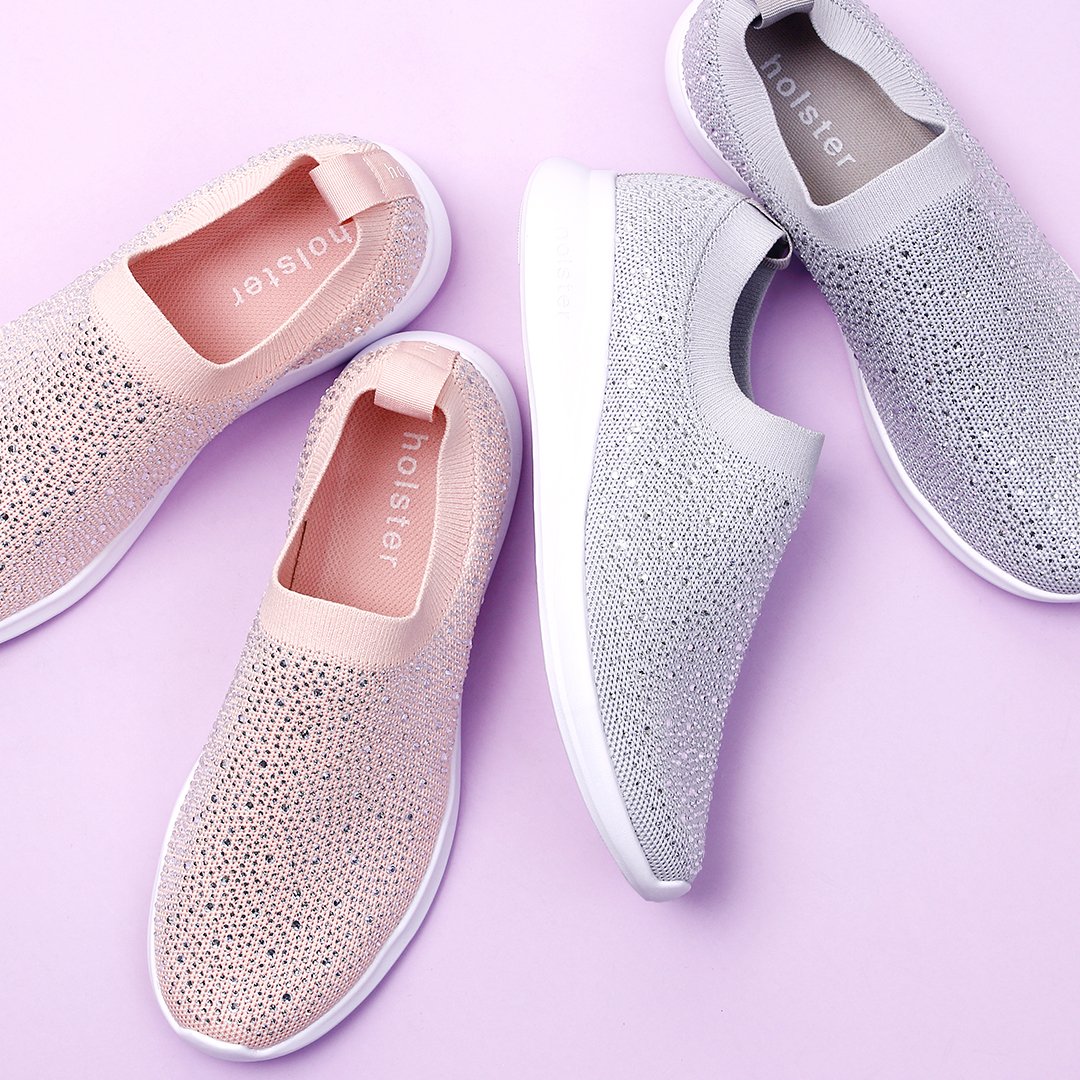 The Firefly sneaker, encrusted with 3,100 jewel studs, also has hidden treasures. Namely, the millions of tiny air bubbles injected into its outer sole which along with other podiatry features, provide whole-foot support, cushioning and superior spring - in short, perfect for fitness plus glamour.The just-released Firefly joins three other lightweight metallic knit sneaker styles created by Australian footwear favourite, holster.There will be plenty more to tempt at Fashion Exposed Now, assures Ben Nothling who with designer wife, Natalie Miller, launched the Noosa-based company in 2001 with a range of jelly sandals and espadrilles.Eighteen years on, holster is internationally renowned for its stylish, innovative collections for women and children. And, vital in this endangered age, its solid credentials for sustainability and ethical production.
The Firefly sneaker, encrusted with 3,100 jewel studs, also has hidden treasures. Namely, the millions of tiny air bubbles injected into its outer sole which along with other podiatry features, provide whole-foot support, cushioning and superior spring - in short, perfect for fitness plus glamour.The just-released Firefly joins three other lightweight metallic knit sneaker styles created by Australian footwear favourite, holster.There will be plenty more to tempt at Fashion Exposed Now, assures Ben Nothling who with designer wife, Natalie Miller, launched the Noosa-based company in 2001 with a range of jelly sandals and espadrilles.Eighteen years on, holster is internationally renowned for its stylish, innovative collections for women and children. And, vital in this endangered age, its solid credentials for sustainability and ethical production.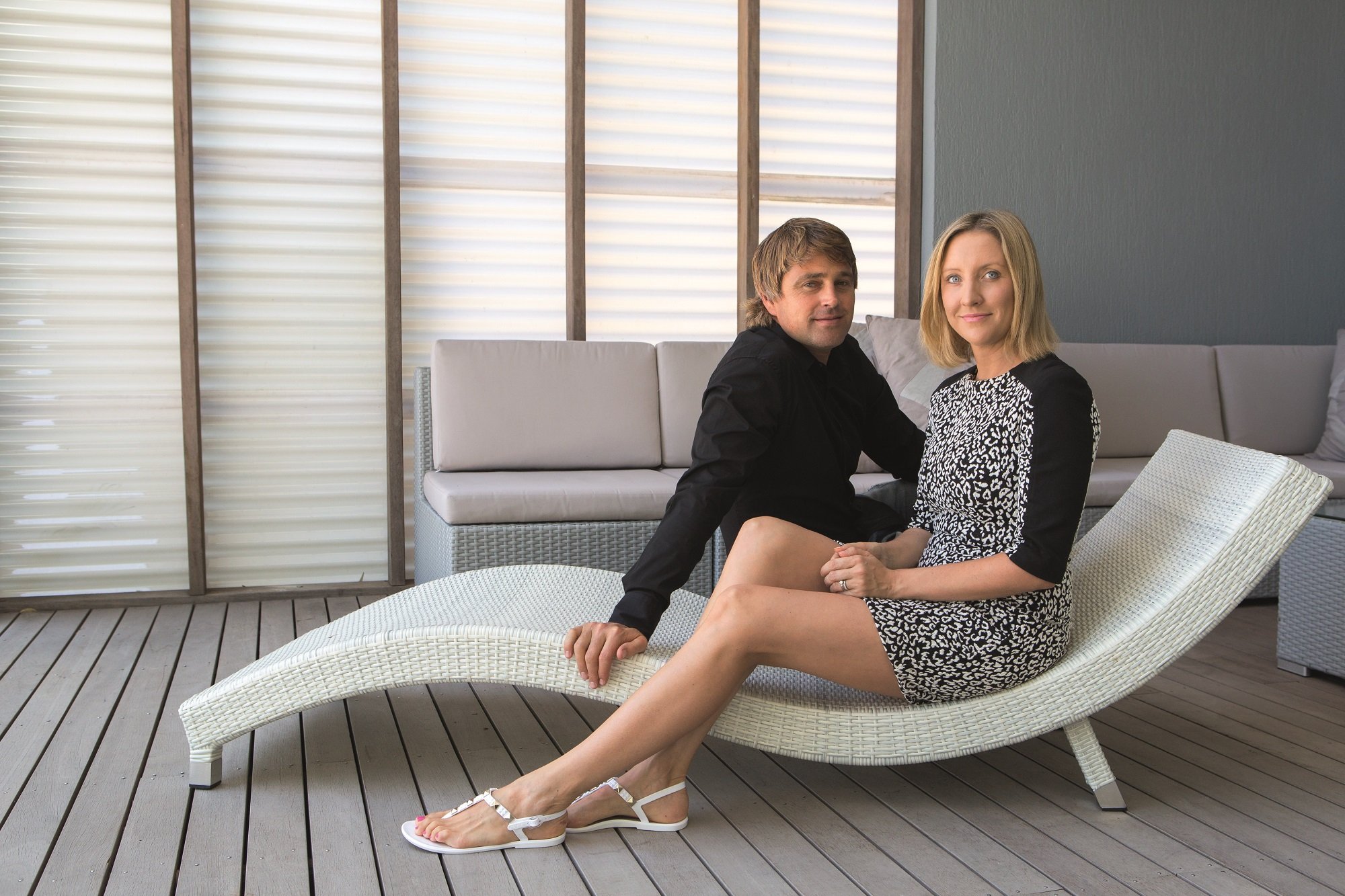
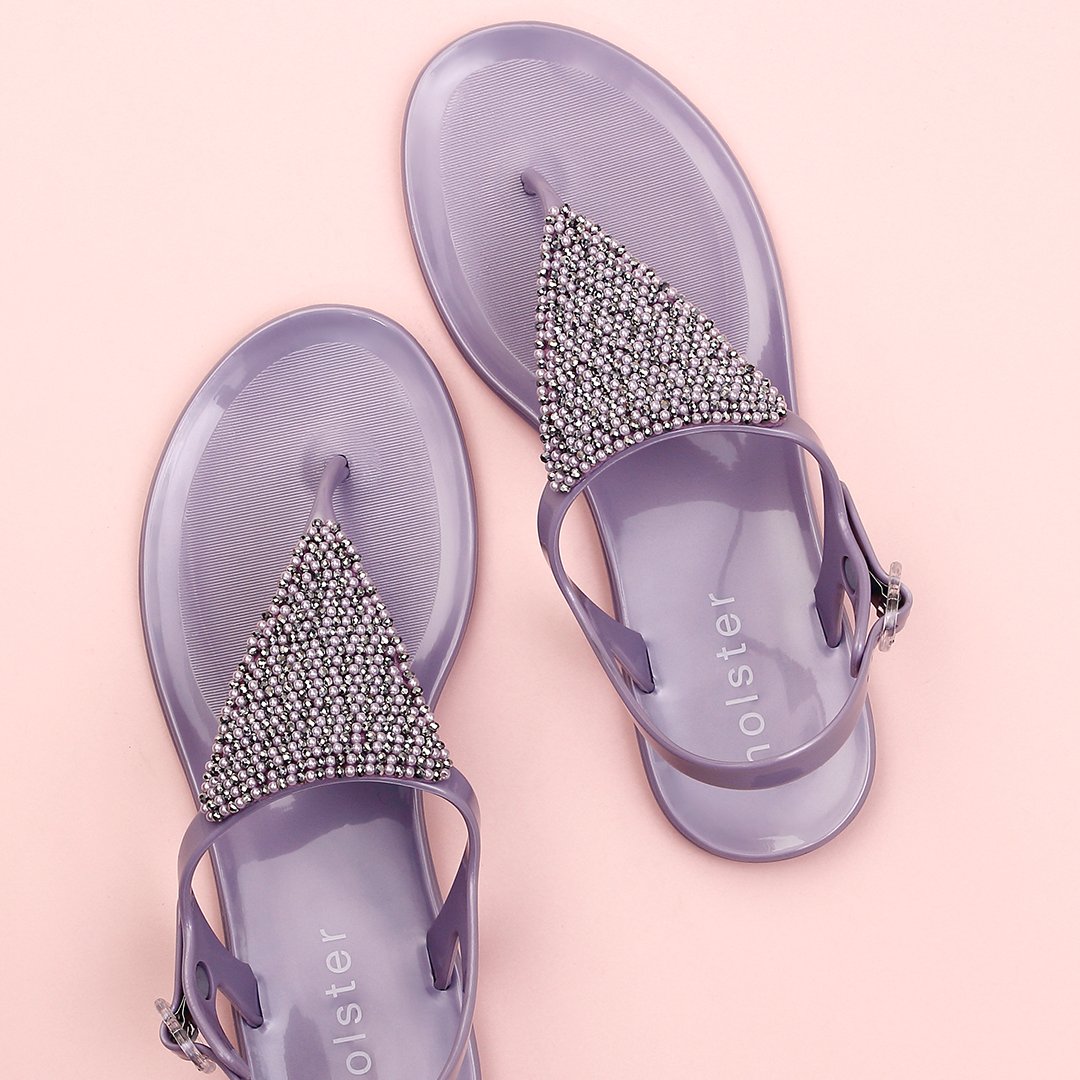 “Our footwear is 100 per cent vegan and certified by the Vegan Society in the UK,” says Ben. “No harmful chemicals go into its production and we don’t use animal products for materials such as glues.“It’s not just about ethics. The widespread use of toxic chemicals for cheap footwear is tremendously worrying, especially when it comes to children’s footwear, such as jelly shoes. Ours are not only safe, but fully recyclable.”A direct descendant of department store founder David Jones, Ben Nothling has clearly inherited entrepreneurial savvy. At 43, he runs a company that can boast more than 2,000 stockists across the globe and 2019 is shaping up as a bumper year.“Asia is our biggest market,” notes Ben. “We’re especially strong in Thailand - we recently opened our 25th boutique in Bangkok – and we’re stocked by key department stores in the region including Takashimaya, Central, Tangs, Sogo and Isetan.”A recent partnership with Indonesia’s leading retailer, MAP, which has some 2,200 stores, will substantially boost the holster brand in Australia’s closest Asian neighbour, and a major coup is about to take effect.“From March 20, holster will be available at Jewel, a fabulous new shopping hub inside the international terminals at Singapore’s Changi Airport,” reveals Ben. “It will give us exposure to millions of transiting travellers each year.”Central to holster’s success has been Natalie Miller, born and bred in Noosa. Now in her mid-30s and mother of the couple’s two young children, she is holster’s head designer – a formidable
“Our footwear is 100 per cent vegan and certified by the Vegan Society in the UK,” says Ben. “No harmful chemicals go into its production and we don’t use animal products for materials such as glues.“It’s not just about ethics. The widespread use of toxic chemicals for cheap footwear is tremendously worrying, especially when it comes to children’s footwear, such as jelly shoes. Ours are not only safe, but fully recyclable.”A direct descendant of department store founder David Jones, Ben Nothling has clearly inherited entrepreneurial savvy. At 43, he runs a company that can boast more than 2,000 stockists across the globe and 2019 is shaping up as a bumper year.“Asia is our biggest market,” notes Ben. “We’re especially strong in Thailand - we recently opened our 25th boutique in Bangkok – and we’re stocked by key department stores in the region including Takashimaya, Central, Tangs, Sogo and Isetan.”A recent partnership with Indonesia’s leading retailer, MAP, which has some 2,200 stores, will substantially boost the holster brand in Australia’s closest Asian neighbour, and a major coup is about to take effect.“From March 20, holster will be available at Jewel, a fabulous new shopping hub inside the international terminals at Singapore’s Changi Airport,” reveals Ben. “It will give us exposure to millions of transiting travellers each year.”Central to holster’s success has been Natalie Miller, born and bred in Noosa. Now in her mid-30s and mother of the couple’s two young children, she is holster’s head designer – a formidable 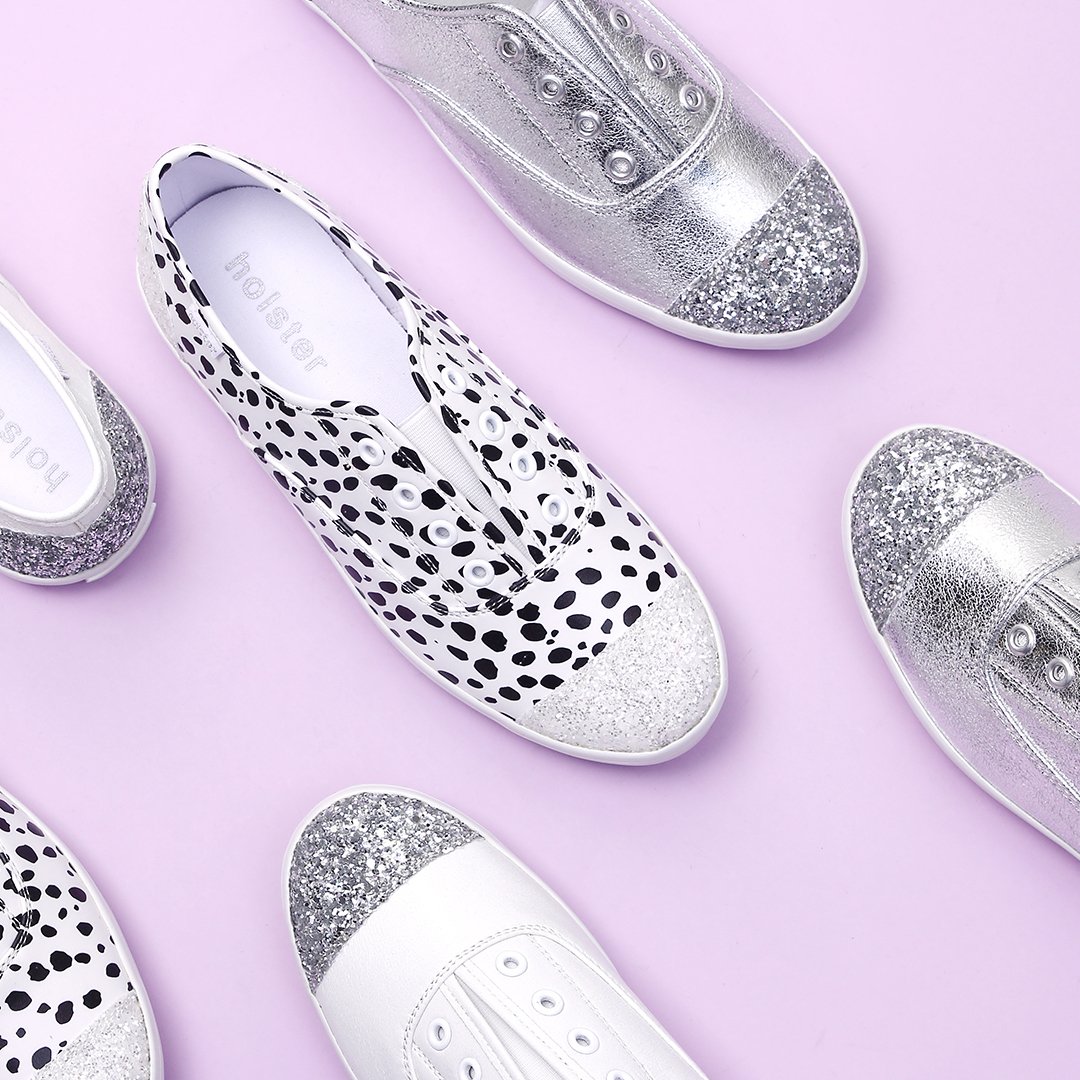 talent whose collections simultaneously evoke Australia’s iconic beach culture and a classiness that has universal appeal.Internationally recognised as a premium, yet affordable brand, holster has maintained its edge through state of the art technology, as well as its appeal to the fashion-conscious.Its new season bejeweled sandals, slides and flip-flops with their shock absorbent air-foam footbeds – “comparable to gently sinking into soft beach sand, easing pressure from the back and feet” – typify holster’s approach. So does Natalie’s distaste for fussiness and bling.Sandals, slides, thongs, wedges and espadrilles – like the sneakers, all are coolly elegant and for Spring-Summer 2019 feature a refined palette including rose gold, silver, pewter and nickel. They are also a podiatrist’s dream.“Along with our core principles of being sustainable, vegan-friendly and cruelty-free, we put a massive emphasis on health and comfort,” says Ben Nothling.- Zelda Cawthorne
talent whose collections simultaneously evoke Australia’s iconic beach culture and a classiness that has universal appeal.Internationally recognised as a premium, yet affordable brand, holster has maintained its edge through state of the art technology, as well as its appeal to the fashion-conscious.Its new season bejeweled sandals, slides and flip-flops with their shock absorbent air-foam footbeds – “comparable to gently sinking into soft beach sand, easing pressure from the back and feet” – typify holster’s approach. So does Natalie’s distaste for fussiness and bling.Sandals, slides, thongs, wedges and espadrilles – like the sneakers, all are coolly elegant and for Spring-Summer 2019 feature a refined palette including rose gold, silver, pewter and nickel. They are also a podiatrist’s dream.“Along with our core principles of being sustainable, vegan-friendly and cruelty-free, we put a massive emphasis on health and comfort,” says Ben Nothling.- Zelda Cawthorne 
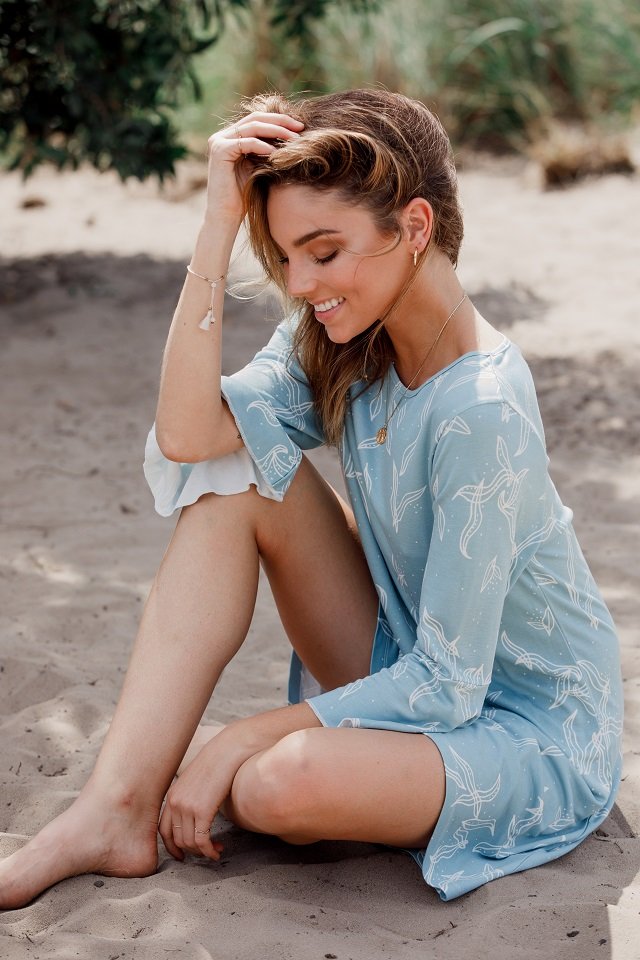 scanned the drawing into her computer to see if it would work as a fabric print.It needed just a few refining touches. Colours came next – the leaf outlines in ivory over a light blue background – and so, the Eucalyptus Print Collection was born in late 2018.Its fresh, relaxed dresses and separates will be among several new season standouts presented at Fashion Exposed Now by Bamboo Body, the Sydney-based label founded in 2005 by sisters Elouise Danby and Amanda Naess.“Look Good. Feel Good. Do Good” is Bamboo Body’s slogan. The philosophy behind it – clothing can be beautiful and sustainable - has never wavered, though one thing has changed dramatically.Notes Elouise: “When we began, eco fashion was seen as a bit alternative; now it’s mainstream because awareness of global warming and damage to the environment has grown hugely.“Back in 2005, Amanda and I realized there was a gap in the market for genuinely sustainable fashion.“Australian cotton farms have a massively destructive impact on waterways, so cotton was out as a key material. Then we got some bamboo fabric samples and wow, they were amazing – so soft and light.”
scanned the drawing into her computer to see if it would work as a fabric print.It needed just a few refining touches. Colours came next – the leaf outlines in ivory over a light blue background – and so, the Eucalyptus Print Collection was born in late 2018.Its fresh, relaxed dresses and separates will be among several new season standouts presented at Fashion Exposed Now by Bamboo Body, the Sydney-based label founded in 2005 by sisters Elouise Danby and Amanda Naess.“Look Good. Feel Good. Do Good” is Bamboo Body’s slogan. The philosophy behind it – clothing can be beautiful and sustainable - has never wavered, though one thing has changed dramatically.Notes Elouise: “When we began, eco fashion was seen as a bit alternative; now it’s mainstream because awareness of global warming and damage to the environment has grown hugely.“Back in 2005, Amanda and I realized there was a gap in the market for genuinely sustainable fashion.“Australian cotton farms have a massively destructive impact on waterways, so cotton was out as a key material. Then we got some bamboo fabric samples and wow, they were amazing – so soft and light.”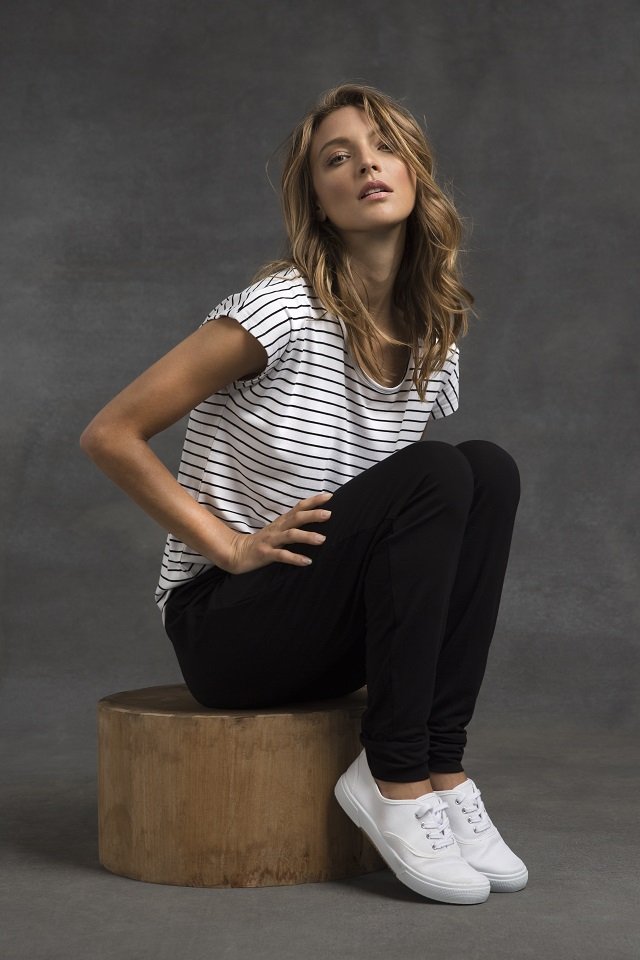 As the sisters soon discovered, bamboo not only drapes like a dream and blends well with other natural fibres, but is breathable and absorbs moisture, making it ideal for sensitive skin. As for the bamboo plant’s exceptionally low carbon footprint – truly one of nature’s superstars!Raised in NSW coastal town, Kiama – “still my favourite place in the world” – Elouise found herself at a sewing machine from age 13. “I’m small and read-to-wear didn’t work for me because I fell into the size gap between clothes for kids and adults, so I designed and made my own,” says the petite mother of two who heads operations and design at Bamboo Body.The strategy devised by the Elouise and Amanda could serve as a blueprint for long-term success: predominantly trans-seasonal, affordably priced collections that focus on classic design, wardrobe staples, unique inhouse prints and – increasingly demanded by the public – production practices that are environmentally and socially responsible.China has played a key role. The organically grown bamboo used by Bamboo Body is farmed in Yunnan Province and the Suzhou factory used by the company is committed to reducing emissions and recycling waste, and employs no workers under the age of 18.Other sustainable measures at Bamboo Body include using recycled paper and cardboard, and transporting their manufactured garments by sea rather than air, though of course all depends on the success of the collections.
As the sisters soon discovered, bamboo not only drapes like a dream and blends well with other natural fibres, but is breathable and absorbs moisture, making it ideal for sensitive skin. As for the bamboo plant’s exceptionally low carbon footprint – truly one of nature’s superstars!Raised in NSW coastal town, Kiama – “still my favourite place in the world” – Elouise found herself at a sewing machine from age 13. “I’m small and read-to-wear didn’t work for me because I fell into the size gap between clothes for kids and adults, so I designed and made my own,” says the petite mother of two who heads operations and design at Bamboo Body.The strategy devised by the Elouise and Amanda could serve as a blueprint for long-term success: predominantly trans-seasonal, affordably priced collections that focus on classic design, wardrobe staples, unique inhouse prints and – increasingly demanded by the public – production practices that are environmentally and socially responsible.China has played a key role. The organically grown bamboo used by Bamboo Body is farmed in Yunnan Province and the Suzhou factory used by the company is committed to reducing emissions and recycling waste, and employs no workers under the age of 18.Other sustainable measures at Bamboo Body include using recycled paper and cardboard, and transporting their manufactured garments by sea rather than air, though of course all depends on the success of the collections.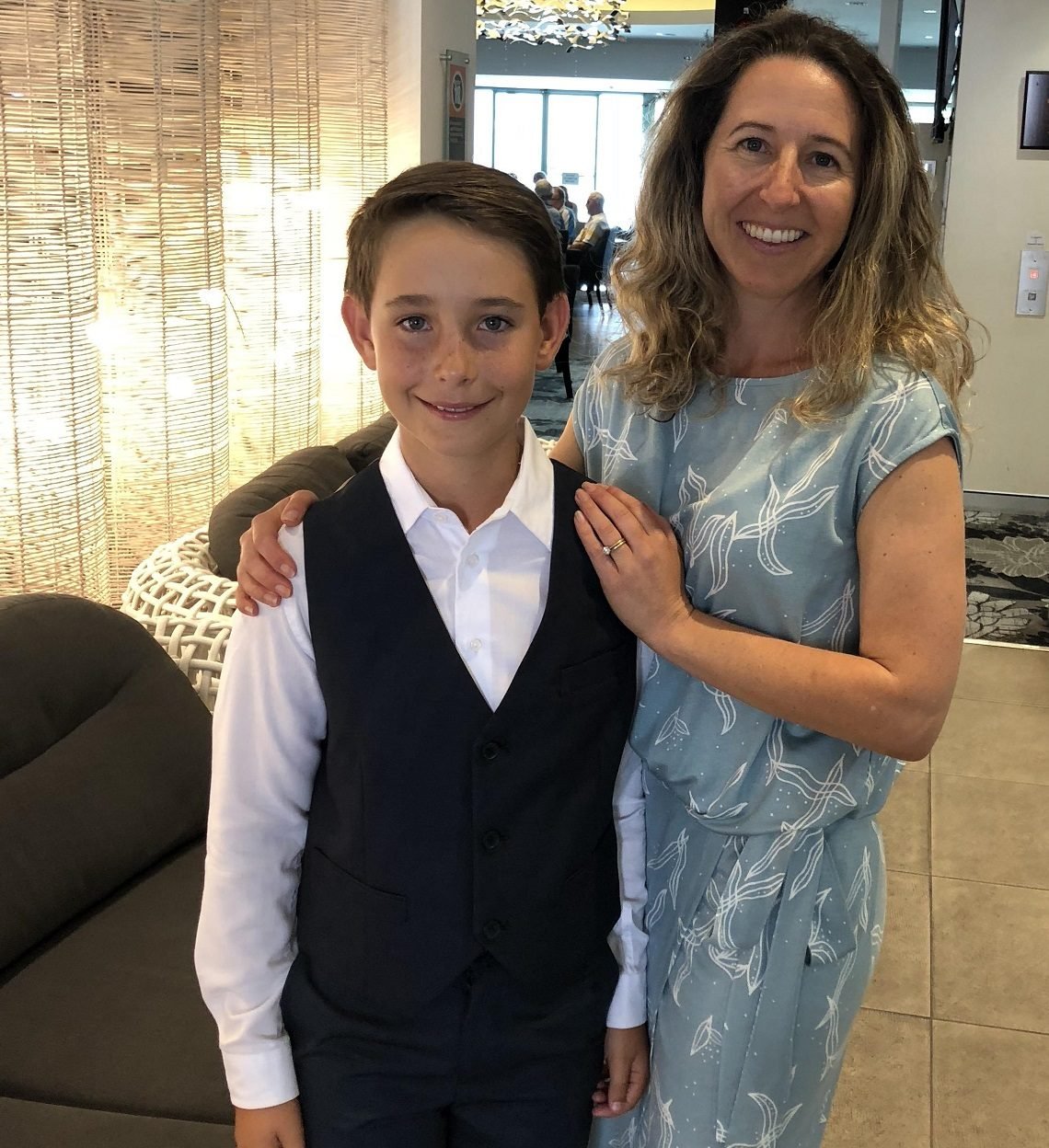 Their popularity in outlets across Australia looks set to continue. While women’s outerwear dominates, there’s also a menswear range and categories include underwear, sleepwear, maternity and knitwear which features blends such as bamboo/cashmere.An important point of difference has been the talented Mel Broughton’s prints, first introduced three years ago. All have been hits and her latest designs will feature at Fashion Exposed Now.“One of them is the Grid Print – a little abstract and great for woven pieces,” says Elouise Danby. “Another is a soft floral for a women’s pyjama collection that we’ll be launching at the fair.” - Zelda Cawthorne
Their popularity in outlets across Australia looks set to continue. While women’s outerwear dominates, there’s also a menswear range and categories include underwear, sleepwear, maternity and knitwear which features blends such as bamboo/cashmere.An important point of difference has been the talented Mel Broughton’s prints, first introduced three years ago. All have been hits and her latest designs will feature at Fashion Exposed Now.“One of them is the Grid Print – a little abstract and great for woven pieces,” says Elouise Danby. “Another is a soft floral for a women’s pyjama collection that we’ll be launching at the fair.” - Zelda Cawthorne